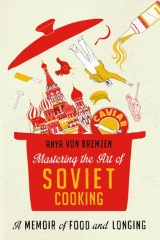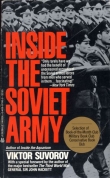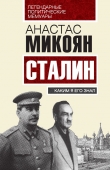
Текст книги "Mastering the Art of Soviet Cooking"
Автор книги: Anya von Bremzen
Жанры:
Биографии и мемуары
,сообщить о нарушении
Текущая страница: 2 (всего у книги 23 страниц)
Eating kulebiaka on Sundays was our nod to a family ritual—even if the pie I’d deposit on the kitchen table of our five-hundred-square-foot two-room apartment shared only the name with the horn of plenty orgiastically celebrated by Gogol and Chekhov. More bulka (white breadroll) than pirog, late-socialist kulebiaka was a modest rectangle of yeast dough, true to Soviet form concealing a barely there layer of boiled ground meat or cabbage. It now occurs to me that our Sunday kulebiaka from Praga expressed the frugality of our lives as neatly as the grandiose version captured czarist excess. We liked our version just fine. The yeast dough was tasty, especially with Mom’s thin vegetarian borscht, and somehow the whole package was just suggestive enough to inspire feverish fantasies about pre-revolutionary Russian cuisine, so intimately familiar to us from books, and so unattainable.
Dreaming about food, I already knew, was just as rewarding as eating.
For my tenth birthday my parents gave me Moscow and Muscovites, a book by Vladimir Giliarovsky, darling of fin-de-siècle Moscow, who covered city affairs for several local newspapers. Combining a Dickensian eye with the racy style of a tabloid journalist, plus a dash of Zola-esque naturalism, Giliarovsky offered in Moscow and Muscovites an entertaining, if exhausting, panorama of our city at the turn of the century.
As a kid, I cut straight to the porn—the dining-out parts.
During the twentieth century’s opening decade, Moscow’s restaurant scene approached a kind of Slavophilic ideal. Unlike the then-capital St. Petersburg—regarded as pompous, bureaucratic, and quintessentially foreign—Moscow worked hard to live up to its moniker “bread-and-salty” (hospitable)—a merchant city at heart, uncorrupted by the phony veneer of European manners and foods. In St. Petersburg you dressed up to nibble tiny portions of foie gras and oysters at a French restaurant. In Moscow you gorged, unabashedly, obliviously, orgiastically at a traktir, a vernacular Russian tavern. Originally of working-class origins, Moscow’s best traktirs in Giliarovsky’s days welcomed everyone: posh nobles and meek provincial landowners, loud-voiced actors from Moscow Art Theater, and merchants clinching the million-ruble deals that fueled this whole Slavophilic restaurant boom. You’d never see such a social cocktail in cold, classist St. Petersburg.
Stomach growling, I stayed up nights devouring Giliarovsky. From him I learned that the airiest blini were served at Egorov’s traktir, baked in a special stove that stood in the middle of the dining room. That at Lopashov traktir, run by a bearded, gruff Old Believer, the city’s plumpest pelmeni—dumplings filled with meat, fish, or fruit in a bubbly rosé champagne sauce—were lapped up with folkloric wooden spoons by Siberian gold-mining merchants. That grand dukes from St. Petersburg endured the four-hundred-mile train journey southeast just to eat at Testov, Moscow’s most celebrated traktir. Testov was famed for its suckling pigs that the owner reared at his dacha (“like his own children,” except for the restraints around their trotters to prevent them from resisting being force-fed for plumpness); its three-hundred-pound sturgeons and sterlets transported live from the Volga; and Guriev kasha, a fanciful baked semolina sweet layered with candied nuts and slightly burnt cream skins, served in individual skillets.
And kulebiaka. The most obscenely decadent kulebiaka in town.
Offered under the special name of Baidakov’s Pie (nobody really knew who this Baidakov was) and ordered days in advance, Testov’s golden-cased tour de force was the creation of its 350-pound chef named Lyonechka. Among other things, Lyonechka was notorious for his habit of drinking shchi (cabbage soup) mixed with frozen champagne as a hangover remedy. His kulebiaka was a twelve-tiered skyscraper, starting with the ground floor of burbot liver and topped with layers of fish, meat, game, mushrooms, and rice, all wrapped in dough, up, up, up to a penthouse of calf’s brains in brown butter.
And then it all came crashing down.
In just a bony fistful of years, classical Russian food culture vanished, almost without a trace. The country’s nationalistic euphoria on entering World War I in 1914 collapsed under nonstop disasters presided over by the “last of the Romanovs”: clueless, autocratic czar Nicholas II and Alexandra, his reactionary, hysterical German-born wife. Imperial Russia went lurching toward breakdown and starvation. Golden pies, suckling pigs? In 1917 the insurgent Bolsheviks’ banners demanded simply the most basic of staples—khleb (bread)—along with land (beleaguered peasants were 80 percent of Russia’s population) and an end to the ruinous war. On the evening of October 25, hours before the coup by Lenin and his tiny cadre, ministers of Kerensky’s foundering provisional government, which replaced the czar after the popular revolution of February 1917, dined finely at the Winter Palace: soup, artichokes, and fish. A doomed meal all around.
With rationing already in force, the Bolsheviks quickly introduced a harsher system of class-based food allotments. Heavy manual laborers became the new privileged; Testov’s fancy diners plunged down the totem pole. Grigory Zinoviev, the head of local government in Petrograd (ex–St. Petersburg), announced rations for the bourgeoisie thusly: “We shall give them one ounce a day so they won’t forget the smell of bread.” He added with relish: “But if we must go over to milled straw, then we shall put the bourgeoisie on it first of all.”
The country, engulfed now by civil war, was rushed toward a full-blown, and catastrophic, centralized communist model. War Communism (it was given that temporary-sounding tag after the fact) ran from mid-1918 through early 1921, when Lenin abandoned it for a more mixed economic approach. But from that time until the Soviet Union’s very end, food was to be not just a matter of chronic uncertainty but a stark tool of political and social control. To use a Russian phrase, knut i prianik: whip and gingerbread.
There was scarce gingerbread at this point.
Strikes in Petrograd in 1919 protested the taste (or lack thereof) of the new Soviet diet. Even revolutionary bigwigs at the city’s Smolny canteen subsisted on vile herring soup and gluey millet. At the Kremlin in Moscow, the new seat of government, the situation was so awful that the famously ascetic Lenin—Mr. Stale Bread and Weak Tea, who ate mostly at home—ordered several investigations into why the Kremlyovka (Kremlin canteen) served such inedible stuff. Here’s what the investigation found: the cooks couldn’t actually cook. Most pre-revolutionary chefs, waiters, and other food types had been fired as part of the massive reorganization of labor, and the new ones had been hired from other professions to avoid using “czarist cadres.” “Iron Felix” Dzerzhinsky, the dread founding maestro of Soviet terror, was besieged by requests from Kremlin staffers for towels for the Kremlyovka kitchens. Also aprons and jackets for cooks. Mrs. Trotsky kept asking for tea strainers. In vain.
Part of the Kremlyovka’s troubles sprang from another of War Communism’s policies: having declared itself the sole purveyor and marketer of food, and setter of food prices, the Kremlin was not supposed to procure from private sources. And yet. The black market that immediately sprang up became—and remained—a defining and permanent fixture of Soviet life. Lenin might have railed against petty speculators called meshochniki (bagmen), the private individuals who braved Dzerzhinsky’s Cheka (secret police) roving patrols to bring back foodstuffs from the countryside, often for their own starving families. But in fact most of the calories consumed in Russia’s cities during this dire period were supplied by such illegal operators. In the winter of 1919–20, they supplied as much as 75 percent of the food consumed, maybe more. By War Communism’s end, an estimated 200,000 bagmen were riding the rails in the breadbasket of the Ukraine.
War Communism showed an especially harsh face to the peasantry. An emphatically urban party, the Bolsheviks had little grasp of peasant realities, despite all the hammer-and-sickle imagery and early nods toward land distribution. To combat drastic grain shortages—blamed on speculative withholding—Lenin called down a “food dictatorship” and a “crusade for bread.” Armed detachments stalked the countryside, confiscating “surpluses” to feed the Red Army and the hungry, traumatically shrunken cities. This was the hated prodrazverstka (grain requisitioning)—a preview of the greater horrors to come under Stalin. There was more. To incite Marxist class warfare in villages, the poorest peasants were stirred up against their better-off kind, the so-called kulaks (“tight-fisted ones”)—vile bourgeois-like objects of Bolshevik venom. “Hang (hang without fail, so the people see) no fewer than one hundred known kulaks, rich men, bloodsuckers,” Lenin instructed provincial leaders in 1918. Though as Zinoviev later noted: “We are fond of describing any peasant who has enough to eat as a kulak.”
And so was launched a swelling, unevenly matched war by the radicalized, industrialized cities—the minority—to bring to heel the conservative, religion-saturated, profoundly mistrustful countryside—the vast majority. Who were never truly fervent Bolshevik supporters.
Agriculture under War Communism plummeted. By 1920, grain output was down to only 60 percent of pre–World War I levels, when Russia had been a significant exporter.
It goes without saying that the concept of cuisine went out the window in those ferocious times. The very notion of pleasure from flavor-some food was reviled as capitalist degeneracy. Mayakovsky, brazen poet of the revolution, sicced his jeering muses on gourmet fancies:
Eat your pineapples, gobble your grouse
Your last day is coming, you bourgeois louse!
Food was fuel for survival and socialist labor. Food was a weapon of class struggle. Anything that smacked of Testov’s brand of lipsmacking—kulebiaka would be a buttery bull’s-eye—constituted a reactionary attack on the world being born. Some czarist traktirs and restaurants were shuttered and looted; others were nationalized and turned into public canteens with the utopian goal of serving new kinds of foods, supposedly futuristic and rational, to the newly Soviet masses.
Not until two decades later, following the abolition of yet another wave of rationing policies, did the state support efforts to seek out old professional chefs and revive some traditional recipes, at least in print. It was part of a whole new Soviet Cuisine project courtesy of Stalin’s food-supply commissariat. A few czarist dishes came peeping back, tricked out in Soviet duds, right then and later.
But the bona fide, layered fish kulebiaka, darling of yore, resurfaced only in Putin’s Moscow, at resurrect-the-Romanovs restaurants, ordered up by oligarch types clinching oil deals.
Mom and I have our own later history with kulebiaka.
After we emigrated to America in 1974, refugees arriving in Philadelphia with two tiny suitcases, Mom supported us by cleaning houses. Miraculously, she managed to save up for our first frugal visit to Paris two years later. The French capital I found haughty and underwhelming. Mom, on the other hand, was euphoric. Her decades-long Soviet dream had finally been realized, never mind the stale saucissons we fed on all week. On our last night she decided to splurge at a candlelit smoky bistro in the sixteenth arrondissement. And there it was! The most expensive dish on the menu—our fish-filled kulebiaka! That is, in its French incarnation, coulibiac—one of the handful of à la russe dishes to have made the journey from Russia in the mainly one-way nineteenth-century gastronomic traffic. Nervously counting our handful of tourist francs, we bit into this coulibiac with tongue-tingled anticipation and were instantly rewarded by the buttery puff pastry that shattered so pleasingly at the touch of the fork. The lovely coral pink of the salmon seemed to wink at us—scornfully?—from the opened pie on the plate as if to suggest France’s gastronomic noblesse oblige. The Gauls, they just couldn’t help being smug. We took a second bite, expecting total surrender. But something—wait, wait—was wrong. Messieurs-dames! Where did you hide the dusky wild mushrooms, the dilled rice, the blinchinki to soak up all those Slavic juices? What of the magically controlled blend of tastes? This French coulibiac, we concluded, was a fraud: saumon en croute masquerading as Russian. We paid the bill to the sneering garçon, unexpectedly wistful for our kulebiaka from Praga and the still-unfulfilled yearnings it had inspired.
It was back in Philadelphia that we finally found that elusive holy grail of Russian high cuisine—courtesy of some White Russian émigrés who’d escaped just before and after the revolution. These gray-haired folk had arrived via Paris or Berlin or Shanghai with noble Russian names out of novels—Golitsyn, Volkonsky. They grew black currants and Nabokovian lilacs in the gardens of their small houses outside Philadelphia or New York. Occasionally they’d attend balls—balls! To them, we escapees from the barbaric Imperium were a mild curiosity. Their conversations with Mother went something like this:
“Where did you weather the revolution?”
Mom: “I was born in 1934.”
“What do the Soviets think about Kerensky?”
Mom: “They don’t think of him much.”
“I heard there’ve been major changes in Russia since 1917.”
Mom: “Er… that’s right.”
“Is it really true that at the races you now can’t bet on more than one horse?”
The Russian we spoke seemed from a different planet. Here we were, with our self-consciously ironic appropriations of Sovietese, our twenty-seven shades of sarcasm injected into one simple word—comrade, say, or homeland. Talking to people who addressed us as dushechka (little soul) in pure, lilting, innocent Russian. Despite this cultural abyss, we cherished every moment at these people’s generous tables. Boy, they could cook! Suckling pig stuffed with kasha, wickedly rich Easter molds redolent of vanilla, the Chekhovian blini plumper than “the shoulder of a merchant’s daughter”—we tasted it all. Mom approached our dining sessions with an ethnographer’s zeal and a notebook. Examining the recipes later, she’d practically weep.
“Flour, milk, yeast, we had all those in Moscow. Why, why, couldn’t I ever make blini like this?”
One day, an old lady, a Smolianka—a graduate of the prestigious St. Petersburg Smolny Institute for Young Women, where culinary skills were de rigueur—invited us over for kulebiaka. This was the moment we had been waiting for. As the pie baked, we chatted with an old countess with a name too grand to even pronounce. The countess recounted how hard she cried, back in 1914, when she received a diamond necklace as a birthday gift from her father. Apparently she had really wanted a puppy. The kulebiaka arrived. Our hearts raced. Here it was, the true, genuine kulebiaka—“naked, shameless, a temptation.” The mushrooms, the blinchiki, even viziga, that gelatinous dried sturgeon spine our hostess had unearthed somewhere in deepest Chinatown—all were drenched in splashes of butter inside a beautifully decorated yeast pastry mantle.
As I ate, Tolstoy’s Anna Karenina flashed into my mind. Because after some three hundred pages describing Vronsky’s passion for Anna, his endless pursuits, all her tortured denials, the consummation of their affair is allotted only one sentence. And so it was for us and the consummate kulebiaka. We ate; the pie was more than delicious; we were satisfied. Happily, nobody leapt under a train. And yet… assessing the kulebiaka and studying our hostess’s recipe later at home, Mom started scribbling over it furiously, crossing things out, shaking her head, muttering, “Ne nashe”—not ours. I’m pretty sure I know what she meant. Dried sturgeon spine? Who were we kidding? Whether we liked it or not, we were Soviets, not Russians. In place of the sturgeon, defrosted cod would do just fine.
It took us another three decades to develop a kulebiaka recipe to call our own—one that hinted at Russia’s turn-of-the-century excess, with a soupçon of that snooty French elegance, while staying true to our frugal past.
But that recipe just wouldn’t do for our 1910s feast tonight.
We needed to conjure up the real deal, the classic.
My mother is finally rolling out her kulebiaka dough, maneuvering intently on a dime-size oasis of kitchen counter. I inhale the sweetish tang of fermented yeast once again and try to plumb my unconscious for some collective historical taste memory. No dice. There’s no yeast in my DNA. No heirloom pie recipes passed down by generations of women in the yellowing pages of family notebooks, scribbled in pre-revolutionary Russian orthography. My two grandmothers were emancipated New Soviet women, meaning they barely baked, wouldn’t be caught dead cooking “czarist.” Curious and passionate about food all her life, Mom herself only became serious about baking after we emigrated. In the USSR she relied on a dough called na skoruyu ruku (“flick of a hand”), a version involving little kneading and no rising. It was a recipe she’d had to teach her mother. My paternal babushka, Alla, simply wasn’t interested. She was a war widow and Soviet career woman whose idea of dinner was a box of frozen dumplings. “Why should I bake,” she told Mother indignantly, “when I can be reading a book?” “What, a detektiv,” Mom snorted. It was a pointed snort. Russia’s top spy thriller writer, the Soviet version of John le Carré, was Grandma’s secret lover.
Peering into the kitchen, I prod Mom for any scraps of pre-revolutionary-style baking memories she might retain. She pauses, then nods. “Da, listen!” There were these old ladies when she was a child. They were strikingly different from the usual bloblike proletarian babushkas. “I remember their hair,” says Mom, almost dreamily. “Aristocratically simple. And the resentment and resignation on their ghostly faces. Something so sad and tragic. Perhaps they had grown up in mansions with servants. Now they were ending their days as kitchen slaves for their own Stalin-loving families.”
My mom talks like that.
“And their food?” I keep prodding. She ponders again. “Their blini, their pirozhki (filled pastries), their pirogs… somehow they seemed airier, fluffier…” She shrugs. More she can’t really articulate. Flour, yeast, butter. Much like their counterparts who had fled Bolshevik Russia, Mom’s Moscow old ladies possessed the magic of yeast. And that magic was lost to us.
And that was the rub of tonight’s project. Of the flavor of the layered Silver Age kulebiaka we had at least an inkling. But the botvinya and the Guriev kasha dessert, my responsibilities—they were total conundrums. Neither I nor Mom had a clue how they were meant to taste.
There was a further problem: the stress and time required to prepare a czarist table extravaganza.
Over an entire day and most of the night preceding our guests’ arrival, I sweated—and sweated—over my share of the meal. Have you ever tried making Guriev kasha during one of the worst New York heat waves in memory?
Thank you, Count Dmitry Guriev, you gourmandizing early-nineteenth-century Russian minister of finance, for the labor-intensive dessert bearing your name. Though actually by most accounts it was a serf chef named Zakhar Kuzmin who first concocted this particular kasha (kasha being the Russian word for almost any grain preparation both dry and porridgy). Guriev tasted the sweet at somebody’s palace, summoned Kuzmin to the table, and gave him a kiss. Then he bought said serf-chef and his family.
Here is how Kuzmin’s infernal inspiration is realized. Make a sweetened farina-like semolina kasha, called manna kasha in Russian. Then in a pan or skillet layer this manna with homemade candied nuts, and berries, and with plenty of penki, the rich, faintly burnished skins that form on cream when it’s baked. Getting a hint of the labor required? For one panful of kasha, you need at least fifteen penki.
So for hour after hour I opened and closed the door of a 450-degree oven to skim off the cream skins. By two a.m. my kitchen throbbed like a furnace. Chained to the oven door, drenched in sweat, I was ready to assault palaces, smash Fabergé eggs. I cursed the Romanovs! I cheered the Russian Revolution!
“Send your maid to the cellar.” That charming instruction kicked off many of the recipes in the best surviving (and Rabelaisian) source of pre-revolutionary Russian recipes, A Gift to Young Housewives by Elena Molokhovets. How my heart went out to that suffering maid! Serfdom might have been abolished in Russia in 1861, but under the Romanovs the peasants—and, later, the industrial workers—continued to live like subhumans. Haute bourgeois housewives gorged on amber fish broths, rosy hams, and live sterlets, while their domestics had to make do with tyuria (a porridgy soup made with stale bread and water), kvass, and bowlfuls of buckwheat groats. Yes, the revolution was necessary. But why, I pondered in my furnace kitchen, why did things have to go so terribly wrong? Woozy from the heat, I brooded on alternative histories:
Suppose Kerensky’s provisional government had managed to stay in power?
Or suppose instead of Stalin, Trotsky had taken over from Lenin?
Or suppose—
Suddenly I realized I’d forgotten to skim off new penki. I wrenched open the oven. The cream had transformed into cascades of white sputtering lava covering every inside inch with scorched white goo. I’d need a whole cadre of serfs to clean it all off. I screamed in despair.
Somehow, at last, at five a.m., I was done. A version of Guriev kasha, no doubt ersatz, sat cooling in my fridge under a layer of foil. Falling asleep, I recalled how at the storming of the Winter Palace thirsty, violent mobs ransacked the Romanovs’ wine cellar, reportedly the largest and the best-stocked in the world. I congratulated them across the century, from the bottom of my heart.
Unlike me, my septuagenarian mom actually relishes late-night kitchen heroics. And her political thinking is much clearer than mine. Yes, she loathes the Romanovs. But she despises the Bolsheviks even more. Plus she had no reason for pondering alternative histories; she was sailing along smoothly with her kulebiaka project.
Her dough, loaded with butter and sour cream, had risen beautifully. The fish, the dilled rice, the dusky wild mushrooms, the thin blinchinki for the filling layers, had all come out juicy and tasty. Only now, two hours before the party, right before constructing the pie, does Mom suddenly experience distress.
“Anyut, tell me,” she says. “What’s the point of the blinchiki? Filling dough with more dough!”
I blink blearily. Ah, the mysteries of the czarist stomach. “Maybe excess is the point?” I suggest meekly.
Mom shrugs. She goes ahead and arranges the filling and its anti-mush blinchiki into a majestic bulk. Not quite a Testov-style skyscraper, but a fine structure indeed. We decorate the pie together with fanciful cut-out designs before popping it into the oven. I’m proud of Mom. As we fan ourselves, our hearts race in anticipation, much like they did for our encounter decades ago with that true kulebiaka chez White Russian émigrés.
But the botvinya still hangs over me like a sword of doom.
A huge summer hit at Giliarovsky’s Moscow traktirs, this chilled kvass and fish potage—a weird hybrid of soup, beverage, fish dish, and salad—confounded most foreigners who encountered it. “Horrible mélange! Chaos of indigestion!” pronounced All the Year Round, Charles Dickens’s Victorian periodical. Me, I’m a foreigner to botvinya myself. On the evening’s table I set out a soup tureen filled with my homemade kvass and cooked greens (botva means vegetable tops), spiked with a horseradish sauce. Beside it, serving bowls of diced cucumbers, scallions, and dill. In the middle: a festive platter with poached salmon and shrimp (my stand-in for Slavic crayfish tails). You eat the botvinya by mixing all the elements in your soup bowl—to which you add, please, ice. A Gift to Young Housewives also recommends a splash of chilled champagne. Ah yes, booze! To drown out the promised “chaos of indigestion,” I’ll pour my horseradish vodka.
“Fish and kvass?” says my mother. “Foo.” (Russian for eek.)
“Aga (Yeah),” I agree.
“Foo,” she insists. “ ’Cause you know how I hate poached salmon.”
Mom harbors a competitive streak in the kitchen. I get the feeling she secretly wants my botvinya to fail.
“You’ve made what? A real botvinya? Homemade kvass?”
Our first guests, Sasha and Ira Genis, eyeball Mom’s table, incredulous. Mom hands them the welcome kalach, a traditional bread shaped like a purse. Their eyes grow wider.
Sasha (the diminutive of Alexander) is a freewheeling émigré essayist and cultural critic, something of a legend in Russia, where his radio broadcasts are adored by millions. He’s a serious gourmet, too. Dinners at the Genis home in New Jersey feature mushrooms gathered under a Siberian moon and smoked lamprey eels smuggled from Latvia.
Mom’s face blossoms with pride as Sasha confesses that, in his whole life, he’s never tasted botvinya and tiered kulebiaka.
“And Guriev kasha?” he cries. “Does it really exist outside literature?”
Suddenly all the guests are here, crowding Mom’s tiny foyer, kissing hello three times, handing over bouquets and bottles. At table, we are: a documentary filmmaker, Andrei, and his wife, Toma, sexy in her slinky, low-cut cocktail frock; my South African–born partner, Barry; and “distinguished American guests”—a couple from Brooklyn, both in the culture business.
“A proper fin-de-siècle traktir setting,” Mom expounds to the Brooklynites in her museum-docent tones, “should be a blend of art nouveau and Russian folkloric.” The Brooklynites nod respectfully.
Zakuski devoured, first vodkas downed, everyone addresses my botvinya. Mom barely touches hers, wrinkling her nose at the salmon. I both like the botvinya and don’t: it tastes utterly alien.
And then, gasp, Mom carries out her kulebiaka. A choral whoop goes up. She cuts into the layers, releasing fishy, mushroomy steam into the candlelight. Slowly, bite by bite, I savor the voluptuousness of the dough-upon-dough Slavic excess. The fluffy layers put me in the mind of luxurious Oblomovian sloth, of collapsing into a huge feather bed. I think I finally get the point of the blinchiki. They’re like marbling in a steak.
Sasha Genis raises his vodka glass to Larisa. “This is the most patriotic meal of my life!” he enthuses. “Putin should be taking note!”
His toast puzzles me. More, it perplexes, touching on what I’ve been turning over in my mind. Patriotic about what? The hated czarist regime? The repressive State we fled decades ago? Or some collective ur-memory of a cuisine never rightfully ours? Back in the USSR, patriotism was a dirty word in our dissident circles. And for that matter, what of our supposed Russianness? At table we’re a typical pan-Soviet émigré crew. Andrei is a Ukrainian Jew; his wife, Toma, is Russian; both are from Kiev. Although the Genises hail from Riga, they’re not Latvian. Mom, also Jewish, was born in Odessa and lived in Murmansk and Leningrad before moving to Moscow. I’m the only born Muscovite among us.
My ruminations on patriotism are drowned out by more toasts. Mom’s air conditioner chugs and strains; the toasts grow more ironic, more Soviet, more “ours” …
What was going on in the Russia we’re bidding adieu to here, in the year 1910? our Brooklyn culturati are asking. “Well, Chekhov has been dead for six years,” answers Sasha. “Tolstoy has just died at a remote railway station.”
“His strange death a major cultural milestone,” Mother chimes in, not to be outdone. “It caused a massive media frenzy.”
In 1913, I add myself, revisiting my patriotism theme, the tone-deaf Czar Nicholas II created a minor public relations disaster by serving a Frenchified menu at the banquet celebrating three hundred years of the Romanov dynasty. Potage a tortue—definitely not patriotic.
Cautiously I dig my spoon now into my Guriev kasha. Rich yet light, with a texture somewhere between pudding and torte, it tastes like a celestial version of my dreaded kindergarten breakfast farina. The guests giggle at my three a.m. penki fiasco.
And then it’s suddenly time for au revoirs. To Mom, to me, to czarist excess. The Genises head off down the hallway to the elevator. Suddenly Sasha comes running back.
“Devochki (Girls)! The kulebiaka, I just have to say again: wow! Inserting blini into yeast pastry!? Unreal.”
Maybe I do understand Sasha’s brand of patriotism and nostalgia. It’s patriotism for that nineteenth-century Russian idea of Culture with a capital C—an idea, and an ideal, that we ex-Soviets from Ukraine and Moscow and Latvia have never abandoned. They still stir us, those memories of savoring orgiastic descriptions of edibles in Chekhov and Gogol while dunking stale socialist pies into penitentiary-style soups.
I want to ask Mom what she thinks of all this, but she looks too exhausted. And sweaty. I have a feeling she’s welcoming the seven and a half decades of frugal Soviet eating ahead of us.









